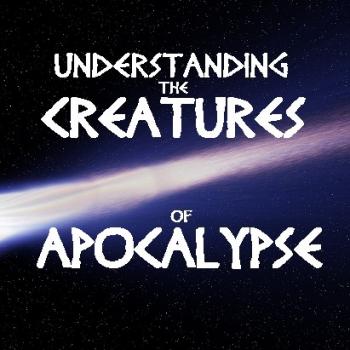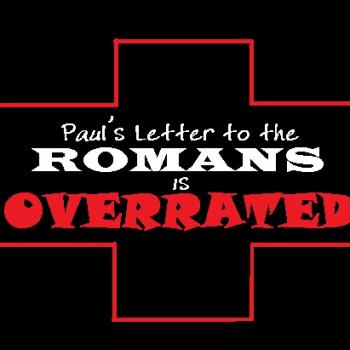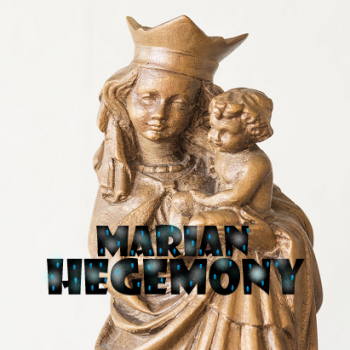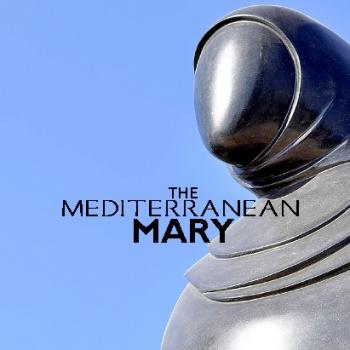
Trads claim that recognizing the starving poverty of Galilean peasants Mary and Jesus is “hateful heresy.”
To paraphrase Doctor Amp (aka Lawrence Jacoby), the Trads are at it again. They’ve been triggered by my recent post on the real Mary. To them, it’s heresy to think of Mary and Jesus and starving Galilean villagers—which is precisely what they were. This is the fruit of Docetism in USA-Catholicism, folks. Then we mix in our racism and classicism. At the end, we leave only the names of Jesus and Mary. The result is we’ve gutted Christ leaving only a husk.
Trads claim otherwise. One opined, “What a hate piece on the Blessed Mother. [The writer] is either heterodox or really knows nothing about the Faith.” I asked her to explain how my piece was hateful. She and others responded because I wrote the fact that Jesus and Mary were starving, poor Galilean peasant villagers. It was as if, to these holier-than-thou white American Catholics, poverty is a sign of God’s absence. Therefore, because of God’s presence in the lives of the Holy Family, they couldn’t be poor.
Soak in that, folks. Consider the ramifications of this popular ignorance.
By the way, here is a video explaining how the Pregnant Sky Woman of Apocalypse came to be associated with Mary and her Assumption. Watch carefully, especially your emotions.
Hey Trads? The New Testament Evolved
How did we confuse a starving Galilean peasant woman with a gigantic Sky entity from the beginning of time?
After centuries following Jesus’ death and resurrection, the Constantinian Church canonized the Book of Revelation. They placed it together with the Gospels of “Luke” and “John.” Consequently, the various images of the mother-virgin, the Woman at the Cross, and the Woman who gave birth to the Messiah co-mingled in the minds of monotheistic Christians. Therefore these images began to reinforce each other.
Eventually for the Solemnity of the Assumption of Mary, a Frankenstein-spliced segment from Revelation was created for the first reading, Revelation 11:19a; 12:1-6a, 10ab. Yes, punctuation, chapter-breaks, and verse-numberings were all added long after the composed Scriptures. But none of this justifies splicing Revelation 11:19a with 12:1. Sorry Scott Hahn and friends, but the Pregnant Sky Woman of Revelation 12:1-5 can’t be the Ark in.Revelation 11:19a
The Ark of the Covenant is Not the Woman
How can we know that? According to Context Group scholars Bruce Malina and John Pilch, Revelation is an edited collection of visions by the astral prophet John (Revelation 1:4, 9). This Seer experienced these and wrote about them at different times in his life. These were later edited together by another person, an anonymous “Compiler” (Revelation 1:1-3).
So initially, the section of Revelation 12—16 was one set of visions inserted into John’s circular letter by “the Compiler.” It deals with the way the Cosmos was before the Flood (Genesis 1—6). Note that the visions of this section describe the prehistoric. Therefore Revelation 12 transpires before humans were created, sometime during the week of Genesis 1. Then the visions found in Revelation 13—16 describe a time before the Flood.
However Revelation 4—11 is another set of visions inserted by “the Compiler.” It describes a sky Trip and Vision of John (i.e., an altered state of consciousness experience). This inserted section concerns how the God of Israel controls the universe and dealt with Judaean Israel in the aftermath of Jesus’ crucifixion.
So visions in Revelation 12—16 describe the beginning of time as imagined by first century Israelite sky lore (Genesis 1—11 read through 1 Enoch). But the visions of Revelation 4—11 describe the situation leading up to Jerusalem’s destruction in 70 CE. The result is the Ark featured in Revelation 11:19a cannot be the Pregnant Sky Woman constellation of Revelation 12.
Mariology Evolves, Trads
But as time passed, spiritually, Mediterranean theologians morphed Mary into the ideal Mediterranean Woman lacking all “female negatives.” Following the Council of Ephesus (431), she slowly became recognized as the perfect symbol of the post-Constantinian Church. And therefore the newly canonized New Testament allowed monotheistic Christians to comingle Lukan and Johannine images of Mary with Revelation’s Sky Woman. Thus, in this way, we can see the canonical Revelation spiritually talking about Mary.
Of course, as this slow evolution transformed Mary into an idealized Mediterranean Woman, and then, eventually, into a Germanic goddess, we lost the illiterate Middle Eastern peasant girl. What Trads forget is that everything in Christ begins with throw-away people, nothing-people, the anawim. Like the ones we place into American concentration camps.
But later on, as the Church got imperial, and as allegory-went-wild, things changed. Verbal orthodoxy cloaked congenial idolatry. The result was to throw out the throw-away people like Galilean peasants. So a stand-in Mediterranean goddess replaced nothing-person Mary. Eventually, a quasi-Norse goddess replaced the Mediterranean replacement.
But our crime goes unnoticed. It’s because we cover it up with verbal orthodoxy and reaction formation. We think that saying “I love Jesus and Mary!” suffices. But actually recognizing what that statement entails takes a whole lot more. And how uncomfortable it is for many American Christians to recognize the poverty of Jesus and Mary, nothing-people.
Hard Facts for Marian Trads
Here are some facts to masticate and swallow, fellow U.S. Catholics:
“Birthrates in the first century were approximately forty per thousand per year, twice that in the U.S. today, though death rates were even higher still; hence in the modern world we have the curious phenomenon of far fewer births and a rapidly rising population. Infant mortality rates have been estimated at 30 percent in many peasant societies today, and that may well have been the case in first-century Palestine. Of the children who made it past infancy, a third were dead before the age of six. By age sixteen, 60 percent had died. By age twenty-six, 75 percent were gone and by age forty-five, 90 percent were dead. Only three percent made it to age sixty.”
Sources:
“The New Testament in Cross-Cultural Perspective,” by Dr. Richard Rohrbaugh.
See also “The Shape of the Past: Models of Antiquity by Thomas Carney,” page 88
“Among most lower-class people [read Jesus and Mary of Nazareth—FDI) who did make it to adulthood, health would have been atrocious. By age thirty, the majority of them suffered from internal parasites, tooth decay, and bad eyesight. Most had lived with the debilitating results of protein deficiency since childhood. Parasites were especially prevalent, carried to humans by sheep, goats, and dogs. Fifty percent of the hair combs from Qumran, Masada, and Murabbat were infected with lice and lice eggs, probably reflecting conditions elsewhere. If infant mortality rates, the age structure of the population, and pathological evidence from abundant skeletal remains can be taken as indicators, malnutrition was a constant threat as well.
Sources
“Death and Disease in Ancient Israel,” pp. 146-59, By Joseph Zias.
See also “Ancient History of Palestine,” p. 98 by David Fiensy
“Infectious disease was the most serious threat to life and undoubtedly accounted for much of the high mortality rate among children.”
Source:
“Death and Disease in Ancient Israel,” p. 149, By Joseph Zias.
“The Middle Eastern peasant village life of Jesus would be one where violence was a regular and routine.”
Sources:
“Jesus and the Economic Questions of His Day”
and
“The Countryside in Luke-Acts” in “The Social World of Luke-Acts: Models for Interpretation” pp. 152-64, by Douglas Oakman; Edited by Jerome Neyrey.
“Jesus and Mary, Middle Eastern first century village peasants, necessarily had bad dietary habits (e.g., as much as one-fourth of a male Palestinian peasant’s calorie intake came from alcohol, and half calories from bread).”
Source:
“The Diet of Palestine in the Roman Period”—Introductory Notes, pp. 41-56 by Megan Broshi.
To all my Trad brothers and sisters: acknowledging the Galilean poverty of Jesus and Mary is hateful? So you really claim to love Jesus and Mary? How can you ever love someone you refuse to even see?











